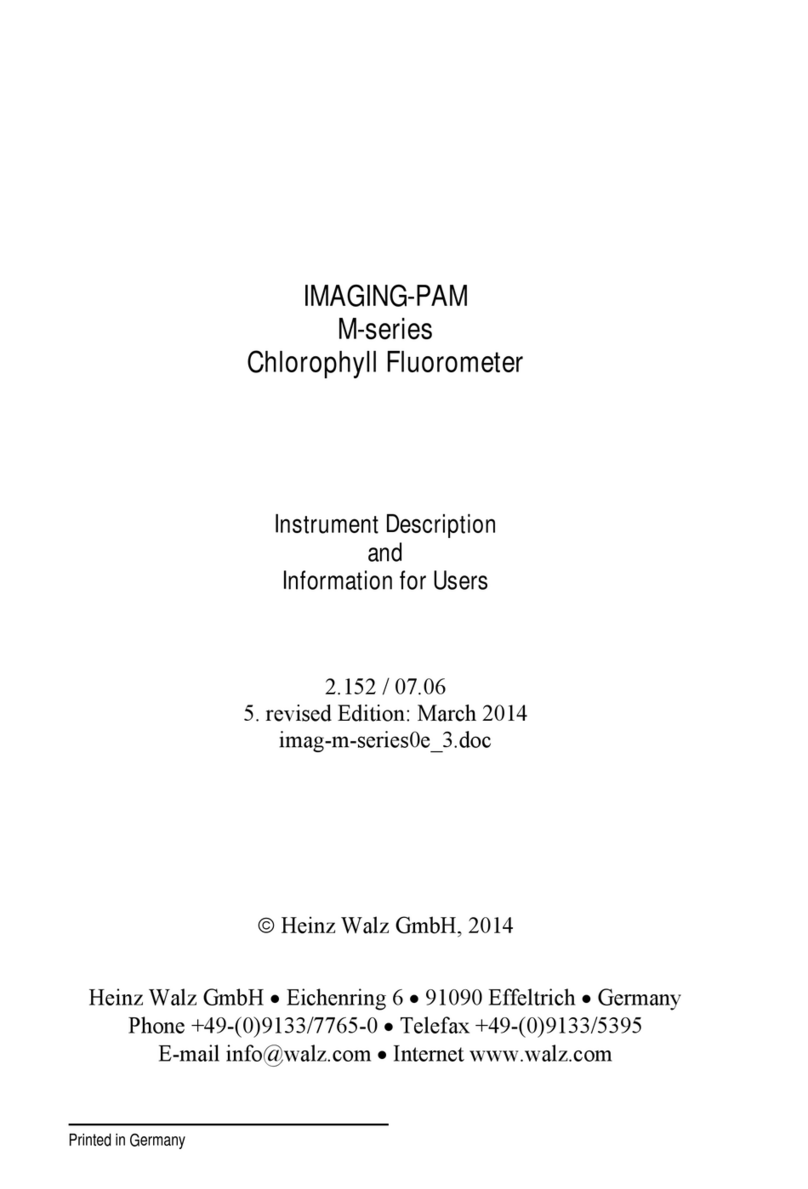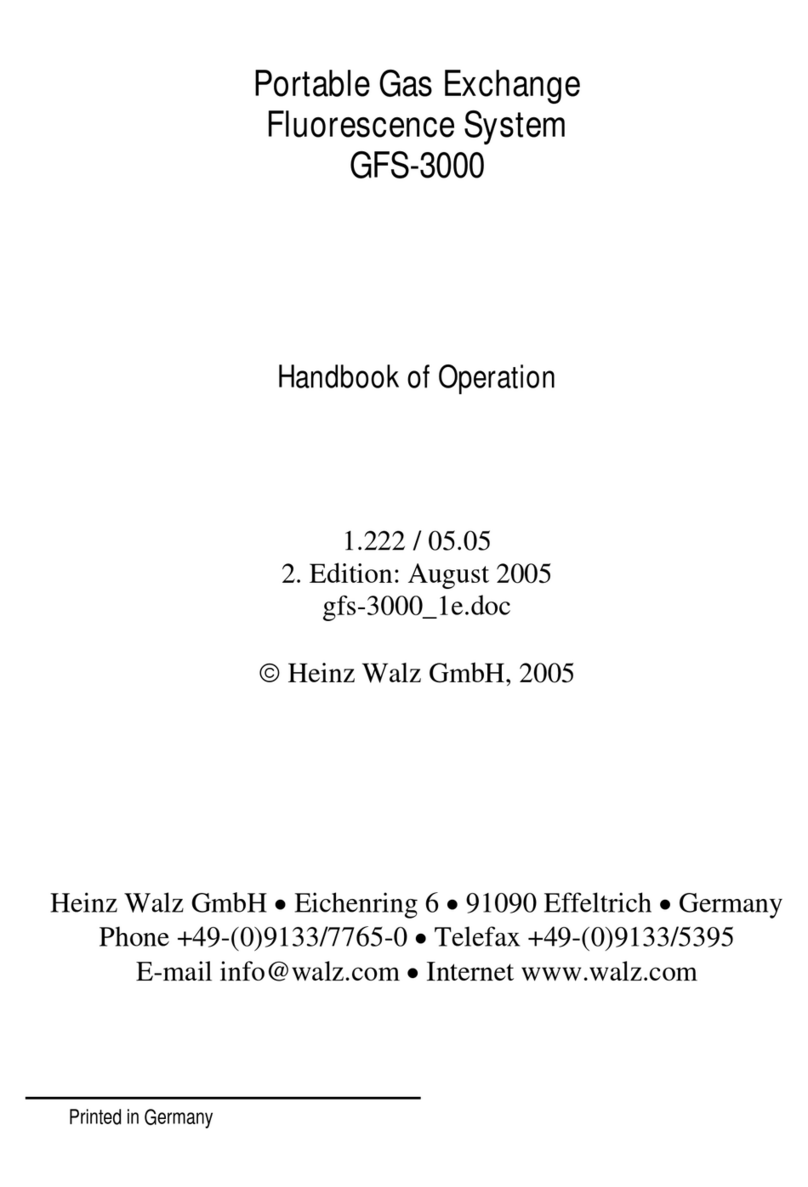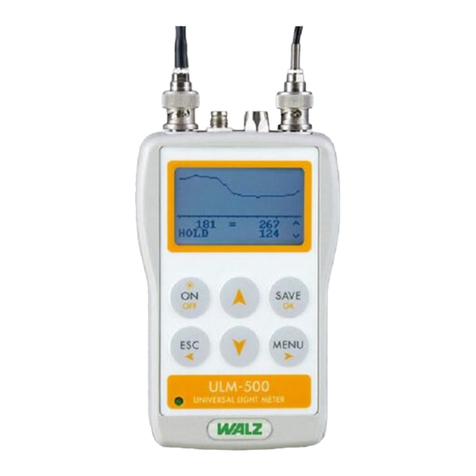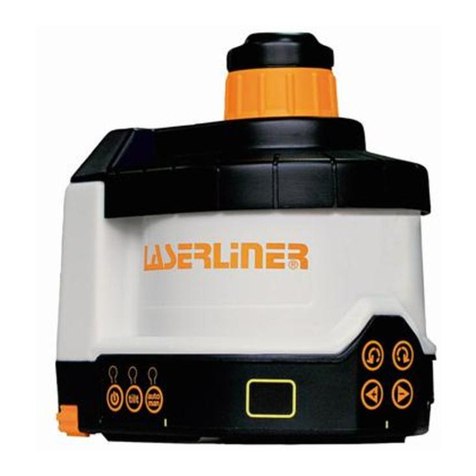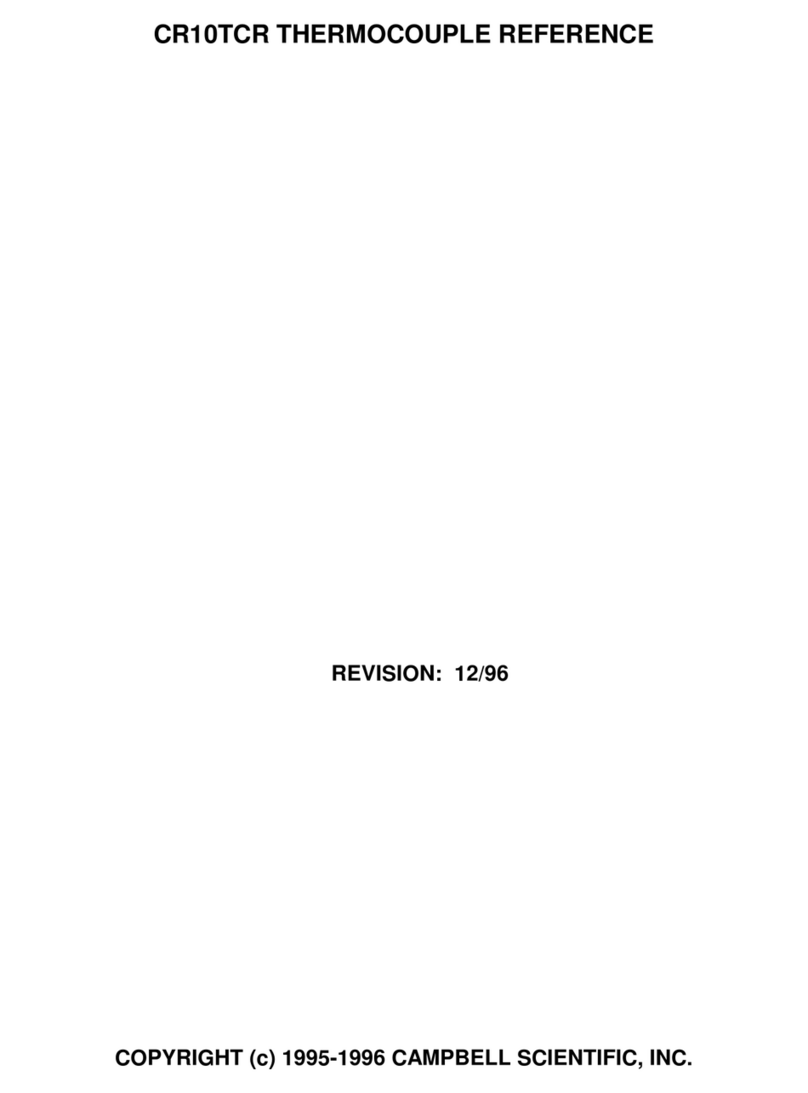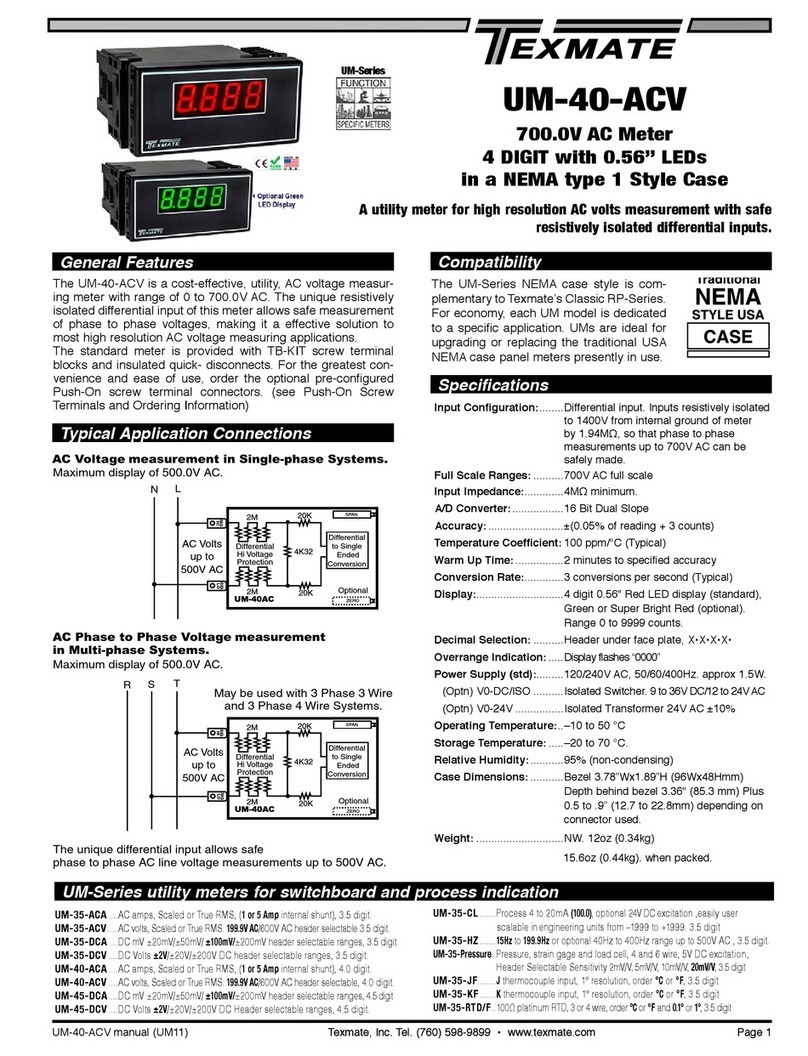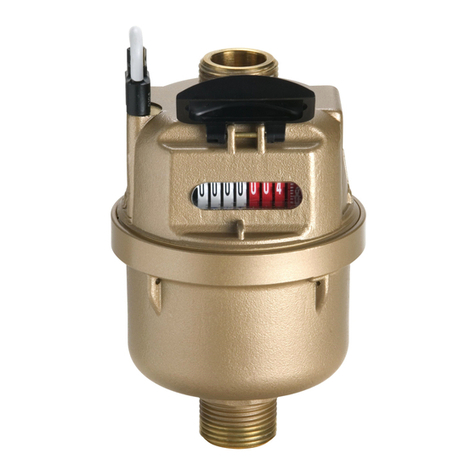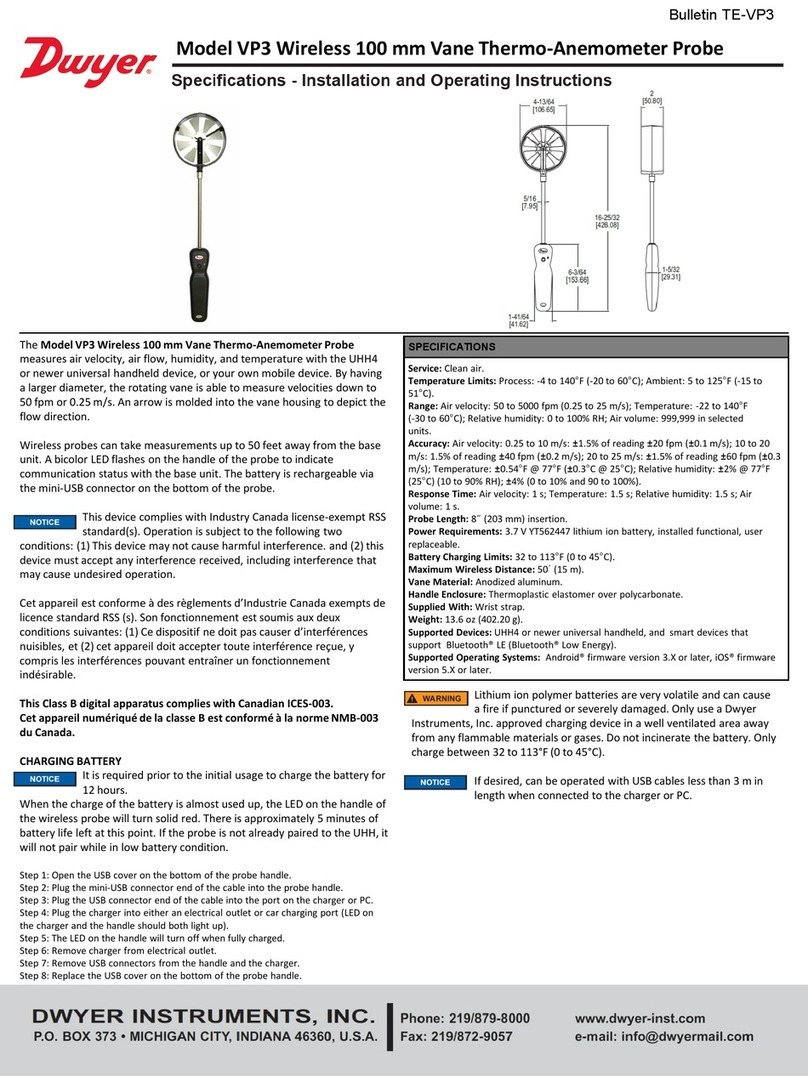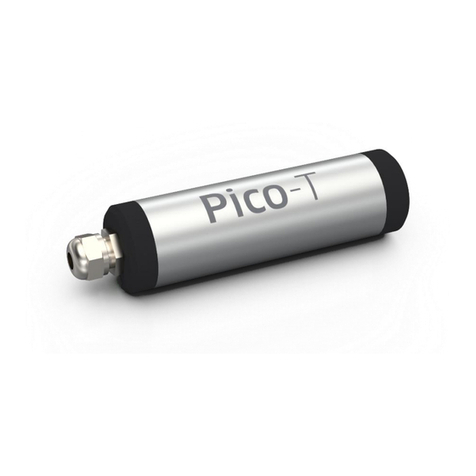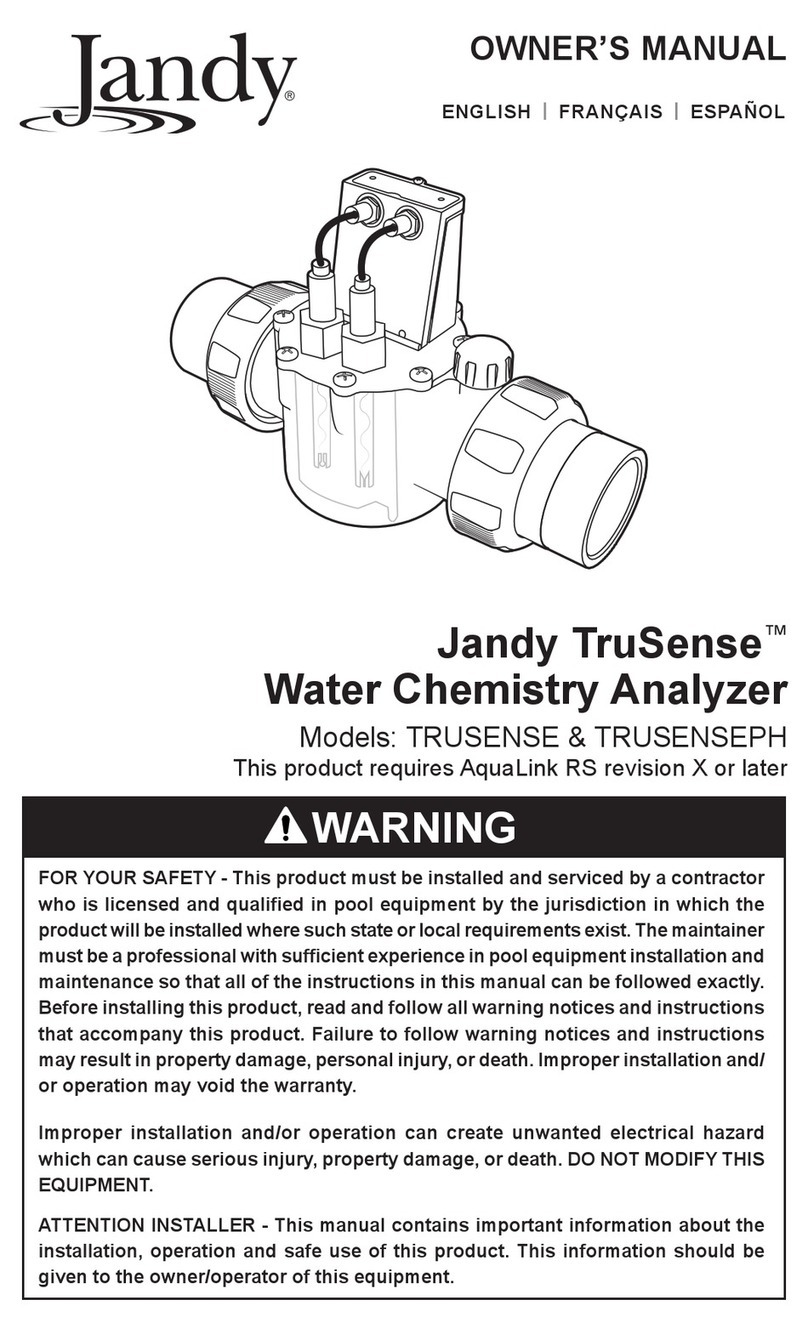Heinz Walz PAM-2500 User manual

Portable
Chlorophyll Fluorometer
PAM-2500
Handbook of Operation
2.156/08.2008
1. (preliminary) Edition: August 2008
PAM_2500_03pp.doc
©Heinz Walz GmbH, 2008
Heinz Walz GmbH •Eichenring 6 •91090 Effeltrich •Germany
Phone +49-(0)9133/7765-0 •Telefax +49-(0)9133/5395


CONTENTS
Contents
1Safety Instructions ....................................................................... 7
1.1 General Safety Instructions ......................................................... 7
1.2 Special Safety Instructions.......................................................... 7
2Introduction .................................................................................. 9
2.1 Intention of this Handbook ....................................................... 10
3Components and Setup .............................................................. 11
3.1 Basic System Components........................................................ 11
3.2 Basic System Setup ................................................................... 11
3.3 PamWin-3 Software Installation ............................................... 13
3.3.1 USB Serial Port Setting .................................................... 14
3.3.2 Wireless Bluetooth Communication ................................. 15
3.4 Accessories................................................................................ 16
3.4.1 Field Combo (optional)..................................................... 16
3.4.1.1 Touch-Screen Ultra-Mobile Personal Computer ............ 16
3.4.1.2 External Battery 000160101314 ..................................... 16
3.4.1.3 Automatic Charger 0001X.............................................. 17
3.4.2 Additional Components .................................................... 18
3.4.2.1 Special Fiberoptics 2010-F ............................................. 18
3.4.2.2 Distance Clip 60° 2010-A............................................... 18
3.4.2.3 Leaf-Clip Holder 2030-B (optional) ............................... 20
3.4.2.4 Micro Quantum/Temp.-Sensor 2060-M (optional)......... 23
3.4.2.5 Dark Leaf Clip DLC-8 (optional) ................................... 23
4PAM-2500 Operation................................................................. 25
4.1 PamWin-3 Help......................................................................... 25
4.2 Field Screen............................................................................... 25
4.2.1 Monitoring Graphs............................................................ 26
1

CONTENTS
4.2.2 Program and Script Control .............................................. 27
4.2.3 Alphanumerical Area........................................................ 27
4.2.3.1 Light Control .................................................................. 29
4.2.3.2 Fluorescence Data........................................................... 32
4.2.3.3 Fluorescence Ratio Parameters....................................... 33
4.2.3.4 Additional Data............................................................... 35
4.2.4 First Measurements Using the Field Screen ..................... 36
4.3 PamWin-3: Advanced Level..................................................... 38
4.3.1 General Settings................................................................ 38
4.3.1.1 Menu Bar ........................................................................ 38
4.3.1.2 Measuring Light Frequency............................................ 45
4.3.1.3 Induction Curve Parameters............................................ 45
4.3.1.4 Global Settings ............................................................... 46
4.3.1.5 PAR Sensor Control ....................................................... 47
4.3.1.6 Fo, Fo’ ............................................................................ 47
4.3.1.7 Tab Bar ........................................................................... 48
4.3.1.8 Pulses, Short Term Illumination ..................................... 48
4.3.1.9 Mode............................................................................... 50
4.3.1.10 Clock Event ............................................................... 50
4.3.1.11 New Record ............................................................... 51
4.4 SP-Analysis Mode .................................................................... 52
4.4.1 Slow Kinetics Window ..................................................... 52
4.4.1.1 Graph Icons..................................................................... 53
4.4.1.2 Graph Y, X ..................................................................... 53
4.4.1.3 Save Ft ............................................................................ 53
4.4.1.4 Display Control............................................................... 53
4.4.1.5 X-Axis Scaling/Zoom In................................................. 54
4.4.1.6 Slow Kinetics Control..................................................... 54
2

CONTENTS
4.4.2 Light Curve ....................................................................... 55
4.4.2.1 Display Control............................................................... 55
4.4.2.2 LC (Light Curve) Control ............................................... 56
4.4.2.3 Light Curve Edit ............................................................. 57
4.4.2.4 Light Curve Fit................................................................ 57
4.4.3 Report................................................................................ 58
4.4.3.1 Report Data Management ............................................... 58
4.4.3.2 Record Header and Last Line ......................................... 60
4.4.3.3 Record Columns ............................................................. 61
4.5 Fast Acquisition Mode .............................................................. 62
4.5.1 Fast Settings...................................................................... 62
4.5.1.1 Basic Settings.................................................................. 63
4.5.1.2 Menu Bar ........................................................................ 64
4.5.1.3 Trigger Settings ( I ) and ( II ) ........................................ 64
4.5.1.4 Light & Pulses ................................................................ 69
4.5.1.5 Start Fast Kinetics........................................................... 70
4.5.2 Fast Kinetics ..................................................................... 70
4.5.2.1 Cursor Coordinates ......................................................... 71
4.5.2.2 File Names ...................................................................... 71
4.5.2.3 File Menu........................................................................ 72
4.5.2.4 Fast Kinetics ................................................................... 72
4.5.2.5 Polyphasic Fluorescence Rise......................................... 74
4.6 View Mode................................................................................ 74
4.6.1 Icon Bar............................................................................. 76
4.6.2 Sidebar .............................................................................. 76
4.6.3 Pick Data........................................................................... 76
4.7 Script Files ................................................................................ 76
5Definitions and Equations ......................................................... 79
3

CONTENTS
5.1 Relative Fluorescence Yields.................................................... 79
5.1.1 Measurements with dark-acclimated samples................... 79
5.1.2 Measurements with light-exposed (treated) samples ........ 79
5.2 Fluorescence Ratio Parameters ................................................. 80
5.3 Constant Fraction of Fo Fluorescence (C/Fo)........................... 84
5.4 Relative Electron Transfer Rate (ETR)..................................... 85
5.5 Rapid Light Curves ................................................................... 87
5.5.1 Some Papers on Rapid Light Curves ................................ 89
5.6 Literature Cited in Chapter 5 .................................................... 90
6Some Reviews on Chlorophyll Fluorescence ........................... 93
7Specifications .............................................................................. 95
7.1 Basic System............................................................................. 95
7.1.1 General Design ................................................................. 95
7.1.2 Light sources..................................................................... 96
7.1.3 Special Fiberoptics 2010-F ............................................... 96
7.1.4 Distance Clip 60° 2010-A................................................. 97
7.1.5 Battery Charger MINI-PAM/L ......................................... 97
7.1.6 External Voltage Supply Cable ........................................ 97
7.1.7 System Control and Data Acquisition .............................. 97
7.1.8 Carrier Bag........................................................................ 98
7.1.9 Transport Box 2040-T ...................................................... 98
7.1.10 Minimum Computer Requirements .................................. 98
7.2 Accessories ............................................................................... 99
7.2.1 Ultra-Mobile Personal Computer for Field Research ....... 99
7.2.1.1 Computer box ................................................................. 99
7.2.1.2 Ultra-mobile touchscreen computer SAMSUNG Q1 Ultra
99
7.2.2 External battery 000160101314...................................... 100
4

CONTENTS
7.2.3 Automatic charger 000190101099.................................. 100
7.2.4 Leaf-Clip Holder 2030-B................................................ 100
7.2.5 Arabidopsis Leaf Clip 2060-B ........................................ 100
7.2.6 Dark Leaf Clip DLC-8 .................................................... 101
7.2.7 Micro Quantum/Temperature-Sensor 2060-M ............... 101
7.2.8 Suspension Cuvette KS-2500 ......................................... 101
7.2.9 Magnetic Stirrer MKS-2500 ........................................... 102
7.2.10 Compact Tripod ST-2101A ............................................ 102
8Trouble Shooting...................................................................... 103
9Warranty................................................................................... 105
9.1 Conditions ............................................................................... 105
9.2 Instructions.............................................................................. 106
10 Index.......................................................................................... 107
5


SAFETY INSTRUCTIONS CHAPTER 1
1Safety Instructions
1.1 General Safety Instructions
a ) Read the safety instructions and the operating instructions
first.
b ) Pay attention to all the safety warnings.
c ) Keep the device away from water or high moisture areas.
d ) Keep the device away from dust, sand and dirt.
e ) Always ensure there is sufficient ventilation.
f ) Do not put the device anywhere near sources of heat.
g ) Connect the device only to the power source indicated in the
operating instructions or on the device.
h ) Clean the device only according to the manufacturer’s rec-
ommendations.
i ) If the device is not in use, remove the mains plug from the
socket.
j ) Ensure that no liquids or other foreign bodies can find their
way inside the device.
k ) The device should only be repaired by qualified personnel.
1.2 Special Safety Instructions
The PAM-2500 is a highly sensitive instrument which should be only
used for research purposes, as specified in this manual. Follow the
instructions of this manual in order to avoid potential harm to the
user and damage to the instrument.
The PAM-2500 can emit very strong light! In order to avoid harm to
your eyes, never look directly at the fiberoptics end, or at open light
ports at the front side of the control unit.
7


INTRODUCTION CHAPTER 2
2Introduction
The PAM-2500 Portable Chlorophyll Fluorometer is the follow-up
model of the well-known PAM-2000/2100 instruments which were
introduced in the 1990s as the first portable PAM fluorometers and
since then have been successfully applied worldwide by numerous
scientists. In the development of the PAM-2500, particular care was
taken to maintain all properties appreciated by PAM-2000/2100 users
and, at the same time, to take account of the recent technical pro-
gress.
Essentially, the hardware and optical system are thoroughly modern-
ized. Also, while continuing basic elements of the graphical user in-
terface, instrument operation is based on the newly-developed Pam-
Win-3 software. The program permits operation under Windows op-
erating systems on normal personal computers, but also on ultra mo-
bile touch screen computers.
Major points of progress of the PAM-2500 with respect to its prede-
cessors are:
-Use of LEDs (light emitting diodes) for all internal light
sources including Saturation Pulses and Actinic Light.
-Blue and Red Actinic internal light sources.
-Single turn-over and multiple turn-over saturating flashes.
-Time resolution down to 10 µs.
-Easily updateable firmware.
-Optional touch-screen operation by an ultra-mobile com-
puter.
9

CHAPTER 2 INTRODUCTION
2.1 Intention of this Handbook
The Portable Fluorometer PAM-2500 displays a high degree of flexi-
bility in measuring and analyzing fluorescence. This does not mean,
however, that all features of this multifunctional instrument must be
understood before measurements can be started. Actually, due to the
"intelligent" central control of all functions by the special PamWin-3
software, serious operational mistakes harming the instrument are
highly unlikely. Also, at first there is no need to care about the nu-
merous settings of instrument parameters, because these are pre-
adjusted for standard measurements. Hence, even the inexperienced
user can start measuring with a minimum of background knowledge,
and will be gradually guided to deeper understanding and more pro-
found applications.
This handbook tries to cover all of the numerous features and appli-
cations of the PAM-2500 Fluorometer, some of which probably are
not of immediate interest to many users, but probably will become
relevant, as new questions arise on the basis of the results obtained.
The best way to become acquainted with all features of the
PAM-2500 Fluorometer is to read this handbook section by section,
trying out all described functions. On the other hand, in order to get a
quick start it will suffice to read Chapter 4.2.
10

COMPONENTS & SETUP CHAPTER 3
3Components and Setup
3.1 Basic System Components
The basic system consists of the following components:
a ) PAM-2500 Control Unit
b ) Special Fiberoptics 2010-F
c ) Distance Clip 60° 2010-A
d ) Battery Charger MINI-PAM/L
e ) MINI-PAM/AK cable
f ) Special USB cable PAM-2500/K1
g ) Fluorescence Standard Foil
h ) Spare Fuse
i ) Carrier Bag
j ) Transport Box 2040-T
k ) Software. PamWin-3 System Control and Data Acquisition
3.2 Basic System Setup
Note: Great caution should be exercised to prevent any dirt or for-
eign matter from entering the ports for the fiberoptics pins.
To set up the PAM-2500 fluorometer:
-Connect fiberoptics to the control unit using the three-pin op-
tical connector at the front of the unit (Fig. 3.1).
11

CHAPTER 3 COMPONENTS & SETUP
Note: Do not force a plug into the wrong socket. Orientate each plug
so that the red dot on the plug coincides with the red dot of the
socket. Do not try to disconnect a plug by pulling at the cable.
Disconnect plug by pulling at the rippled metal part of the plug.
Figure 3.1: PAM-2500 Control Unit. Front. (AL: Red Actinic Light, SP:
Saturation Pulse, ML: Measuring Light, FR: Far-Red light, BL: Blue Ac-
tinic Light, Det.: Detector)
12

COMPONENTS & SETUP CHAPTER 3
-Connect the battery charger cable to the <EXT.DC> socket
(Fig. 3.1 A), and to line power: thereafter, a green
<CHARGE> LED (Fig. 3.1 A) indicates that the internal bat-
tery is charged but yellow LED light signifies that the battery
is currently charged. Please note that an external 12 V battery
cannot recharge the internal battery; but it can provide power
(via the MINI-PAM/AK cable) when the internal battery is
empty.
-Connect computer and control unit (USB socket, Fig. 3.1 A)
by the PAM-2500 special USB cable.
-Switch on PAM-2500 using the toggle switch labeled
POWER ON (Fig. 3.1 A). Flashing of the <Status LED>
(Fig. 3.1 A) indicates that the system is ready for communi-
cations. The LED will shine continuously once communica-
tion with the computer has been established. Constant light
from the <Status LED> in the absence of computer commu-
nication indicates malfunction of the PAM-2500. Usually,
switching power OFF and, after a couple of seconds, ON
again will restore normal function.
3.3 PamWin-3 Software Installation
Depending on the type of CD-ROM delivered with the PAM-2500
Chlorophyll Fluorometer, you have to start installation with a) or b).
a) Your <Software & Manuals CD-ROM> contains only a setup
file (e. g. <PamWin_setup.exe>), and the present handbook
in PDF file format.
-Close other programs before installation of the PamWin_3
software.
13

CHAPTER 3 COMPONENTS & SETUP
-Double click on the setup file and follow instructions. The
setup routine will create in the <C:> root directory the folder
<PamWin_3> containing the PamWin-3 main program and
accessory files. Further, an icon representing a shortcut to
PamWin-3 is created on the computer desktop.
b) Your <Software & Manuals CD-ROM> contains the com-
plete collection of the Walz Software & Manuals.
-The CD automatically starts the default internet browser of
your computer. (If automatic browser start fails, double-click
on <index.html> in the root directory of the <Software &
Manuals> CD-ROM.)
-Choose <Fluorescence Products> →<PAM-2500> →<PC
software PamWin-3>.
-Close other programs before installation of the PamWin_3
software.
-Click on <PamWin-3> to start software installation as de-
scribed above.
3.3.1 USB Serial Port Setting
For serial communication via a serial USB port, a driver software is
installed during the PamWin-3 setup procedure. The successful
driver installation will be confirmed by the software. At first start of
the PamWin-3 software, the program checks the setting of the “la-
tency timer” which needs to be adjusted to 1 ms to ensure high rates
of data transfer.
The latency timer is set to 1 ms on the port (COM & LPT) properties
page which is accessed via the device manager. For Windows XP
computers proceed as described below (the procedure is similar for
the Windows Vista operating system):
14

COMPONENTS & SETUP CHAPTER 3
-Make sure that the PAM-2500 is switched on and connected
by the USB cable to the computer
-Open <Windows Start Menu>
-Select <Settings>
-Select <Control Panel>
-Select <System> and left-click the <Hardware> tab
-Left-click the <Device Manager> button
-Open folder <Ports & LPT>
-Select <USB Serial Port COM#> (double click with left
mouse key).
-Select <Port Settings> tab with left mouse key
-Left-click the <Advanced> button
-Set latency timer to 1 ms
-Close by clicking <OK> in the <Advanced Settings> win-
dow, and the <USB properties> window
3.3.2 Wireless Bluetooth Communication
-Please note that Bluetooth data transfer is too slow for the
<Fast Kinetics> mode of PamWin-3. The <Fast Kinetics>
mode is not available when in Bluetooth communication is
active.
-Make sure that the PAM-2500 is switched on and NOT con-
nected via USB cable to a computer.
-Open <My Bluetooth Places> in the <Start> menu or on the
computer desktop.
-Start by double-click <Find Bluetooth devices>
15

CHAPTER 3 COMPONENTS & SETUP
-Now, the device <PAM 2500 SNR XXXX> should be in the
list of Bluetooth devices (the four “X” stand for the four digit
serial number). If the PAM 2500 is not listed, change posi-
tions of PAM 2500 relative to computer. (Hint: the Bluetooth
output antenna is located at the rear top face of the PAM
2500 instrument.)
-Double click on <PAM 2500 SNR XXXX> and, subse-
quently on <SerialPort on PAM 2500 SNR XXXX>
-Now you’ll be prompted to enter a <Bluetooth security code>
which is for all PAM 2500 chlorophyll fluorometers the
number:
2500
-The Bluetooth connection is now ready for use.
3.4 Accessories
See Chapter 7 for specifications of accessories.
3.4.1 Field Combo (optional)
The add-ons summarized as <Field Combo> convert the PAM-2500
chlorophyll fluorometer into a highly mobile field station, equipped
with the options that a normal PC offers and working for hours inde-
pendent of line current.
3.4.1.1 Touch-Screen Ultra-Mobile Personal Computer
3.4.1.2 External Battery 000160101314
16

COMPONENTS & SETUP CHAPTER 3
3.4.1.3 Automatic Charger 0001X
To assemble the <Field Combo> proceed as shown in Fig. 3.2 and
described subsequently:
-Piece together <External Battery> and rectangular rubber
foam filler (Fig. 3.2 A) and place in PAM-2500 carrier bag as
shown in (Fig. 3.2 B and C).
-Slide-in computer box below elastic belt (Fig. 3.2 C and D).
Note that the computer box is designed to accept the high-
capacity battery of the Ultra-Mobile Personal Computer.
-Insert Ultra-Mobile Personal Computer (Fig. 3.2 E).
Figure 3.2: PAM-2500 Field Setup
17

CHAPTER 3 COMPONENTS & SETUP
3.4.2 Additional Components
3.4.2.1 Special Fiberoptics 2010-F
The Special Fiberoptics 2010-F are connected to the front side of the
PAM-2500 control unit with the help of a special plug that resembles
an electrical connector. There are three "fiber pins" with different op-
tical cross-sections, which fit into the corresponding holes at the front
side of the PAM-2500 housing, where they interface the various light
sources and the photodiode detector. Within the "interface plug" the
three fiber branches are joint to a common fiber bundle and random-
ized via a 100 cm mixing pathway.
Note: The fiberoptics should be handled with care. Excessive bend-
ing, in particular close to the connector plug, should be
avoided, as it would lead to fiber breakage resulting in a loss
of signal amplitude. The fibers are protected by a steel-spiral
and plastic mantle, which provide a natural resistance to
strong bending.
3.4.2.2 Distance Clip 60° 2010-A
A Distance Clip is provided with the fiberoptics for convenient posi-
tioning of the fiberoptics end-piece relative to the sample. The axis of
the end-piece is positioned at a 60° angle relative to the sample plane
(angle of incidence, 30°). Minimum shading of the sample is
achieved when the fiberoptics points towards the sample from the
side opposite to incident light. Two spacer rings may be used to de-
fine fixed distances.
The sample may be placed either below the hole (e. g. thick leaves,
lichens and mosses) or, preferentially with normal leaves, above the
18
Table of contents
Other Heinz Walz Measuring Instrument manuals
Popular Measuring Instrument manuals by other brands
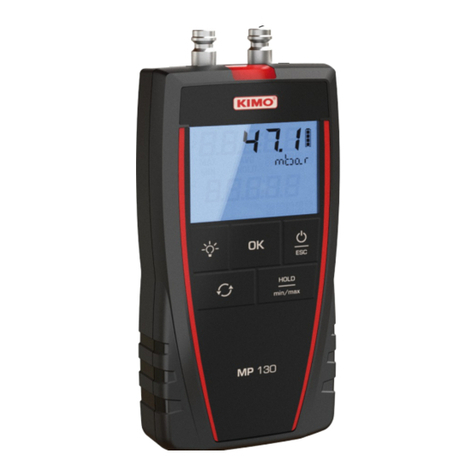
Kimo Instruments
Kimo Instruments MP 130 user manual
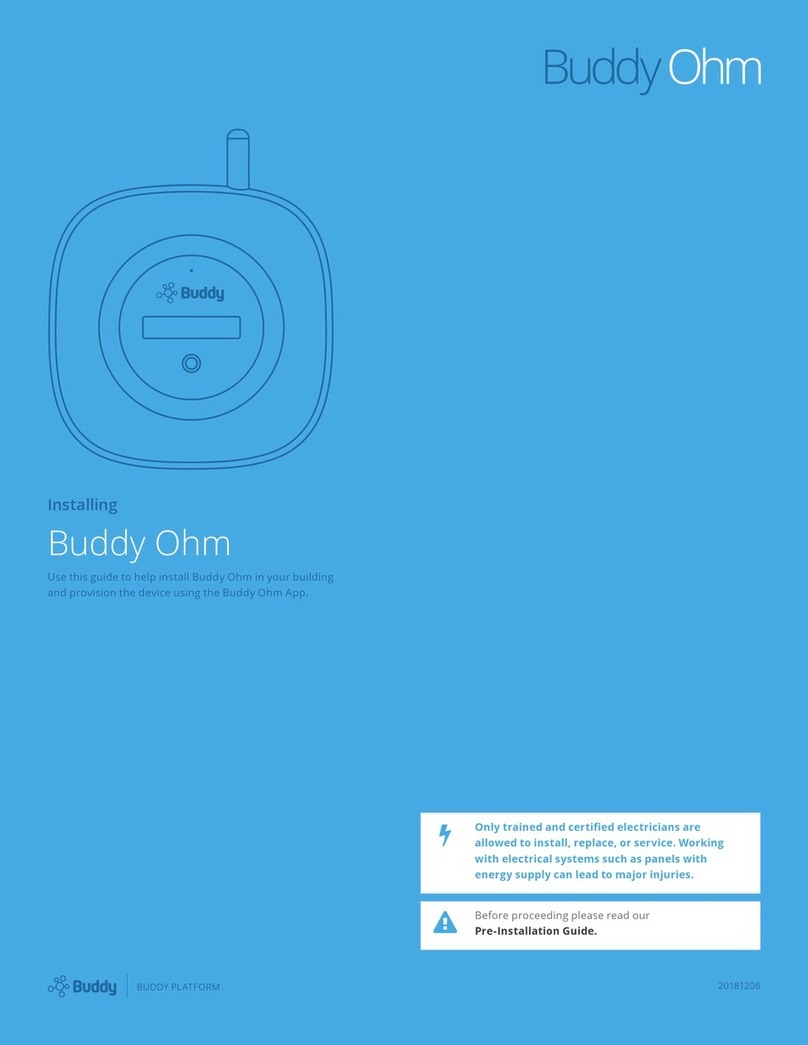
Buddy
Buddy Ohm installation guide

Endress+Hauser
Endress+Hauser Hart Cerabar PMP71B operating instructions
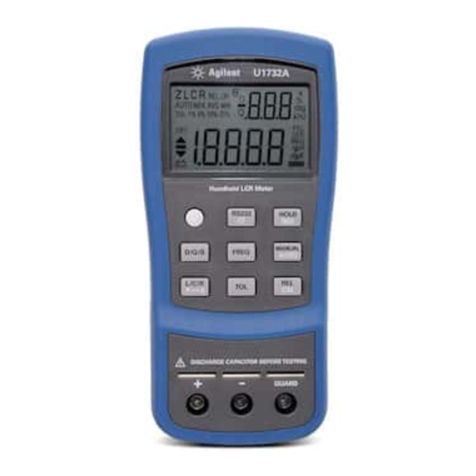
Agilent Technologies
Agilent Technologies U1731A quick start guide

Endress+Hauser
Endress+Hauser PROline promag 23 operating instructions

shumatt
shumatt Carter 320D instruction manual
